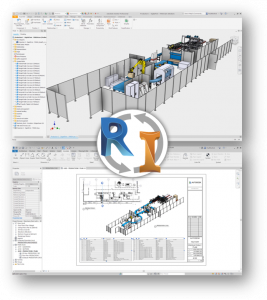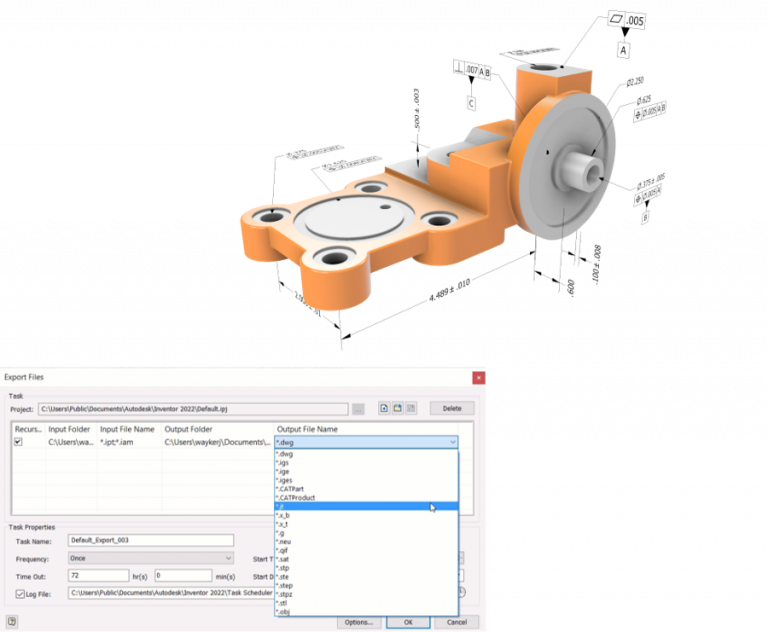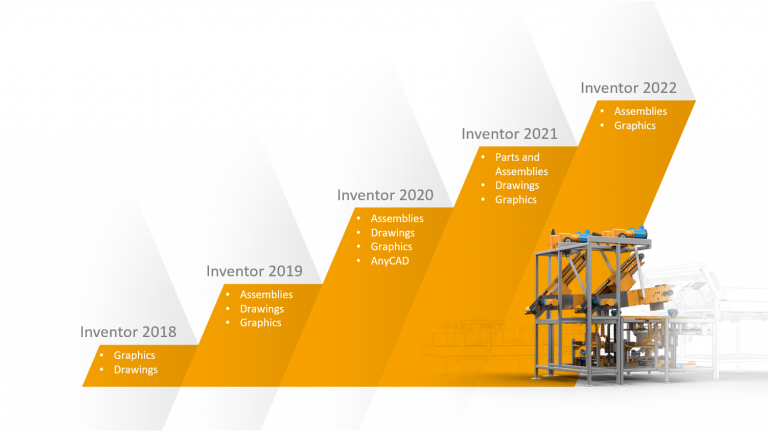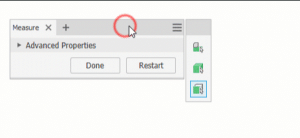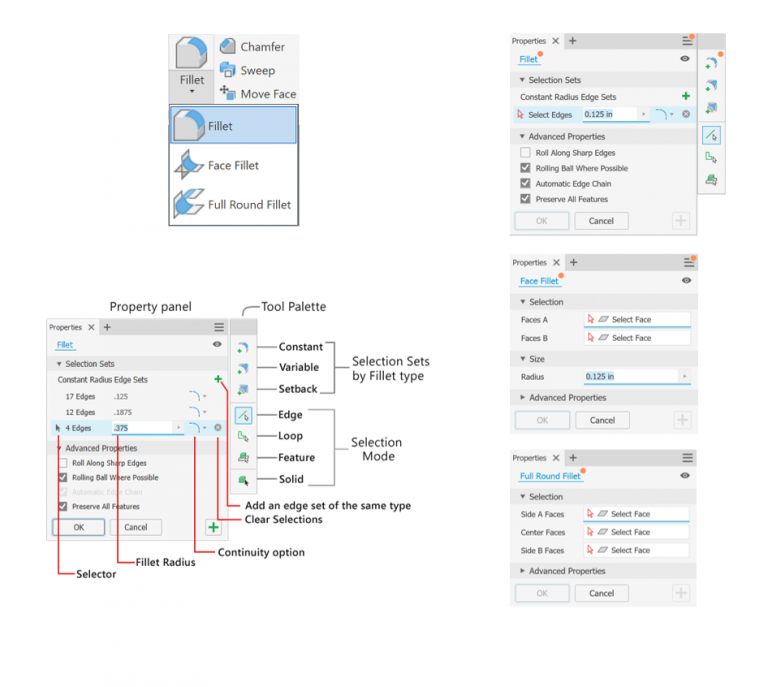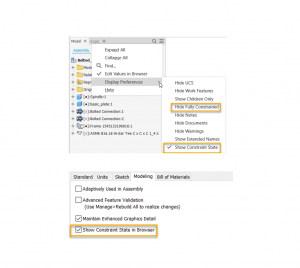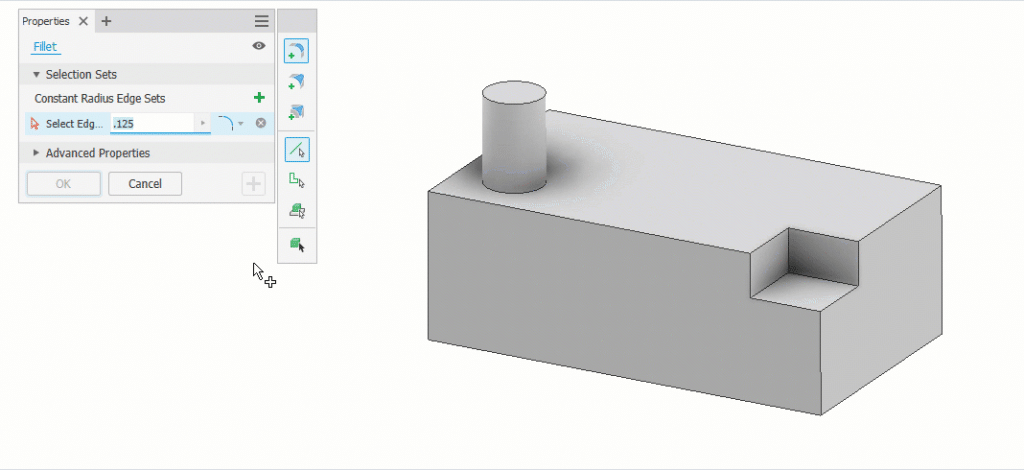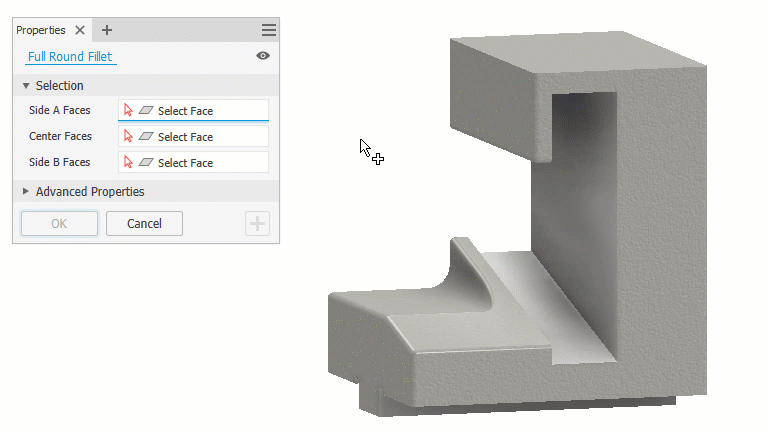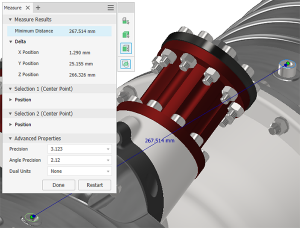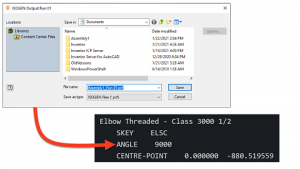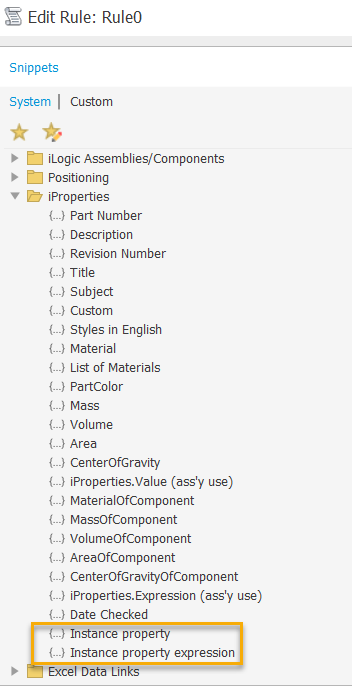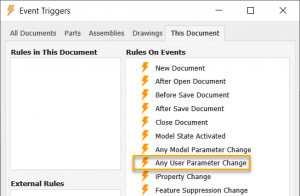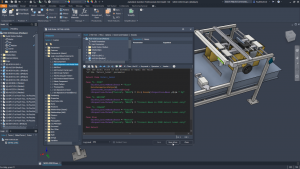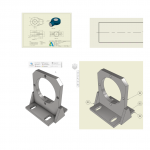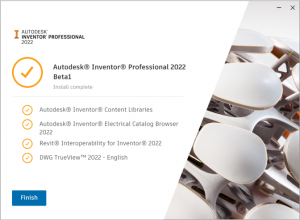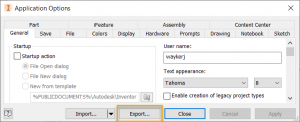What’s New in Inventor 2022
What's New in Inventor 2022
Inventor 2022’s focus has been on managing parts and assemblies through model states, further enhancements to Inventor/Revit interoperability, Fusion 360 interoperability, productivity and performance.

- Model States – Parts: Manage manufacturing operations, dimensional variations, and simplified representations all on one part file.
- Model States – Assemblies: Create multiple representations of an assembly within a single document to manage various assembly configurations and model simplification.
- Revit Interoperability: Collaborate on BIM projects with improved tools to simplify and save native Revit project files in Inventor.
- Productivity and Performance: See increased performance when editing large assemblies and improved productivity in features you use often.
- Installation and Deployment: Get everyone on your team onto the latest release with a new installation and deployment experience.
- Drawings: Use the camera views, manufacturing information, and lighting style from your 3D model in your 2D drawing views.
- Installation and Deployment: Get everyone on your team onto the latest release with a new installation and deployment experience.
Model States - Parts and Assemblies
The new model states workflow enables users to create multiple presentations of a part or assembly within a single document, producing model state variations with different parameters, components, properties or simplification.
Model states are particularly useful for manufacturing processes, families of parts or sheet metal fold operations.
Model states can be used for the following:
- Machining operations from the casted model to the final part
- Sheet metal stages for multiple bend operations
- Weldments for weld preparation and other machining operations
- Product families that have different values for dimensions or features that are shown or suppressed
- Alternative assembly positions to quickly switch between them visually or used for drawing views
- Level of completion for each stage as your design gets assembled
- Simplification levels for removing intellectual property or high levels of detail before export
- iProperty information
Model states in assemblies can be used for configurations, weldment preparation or alternate positions.
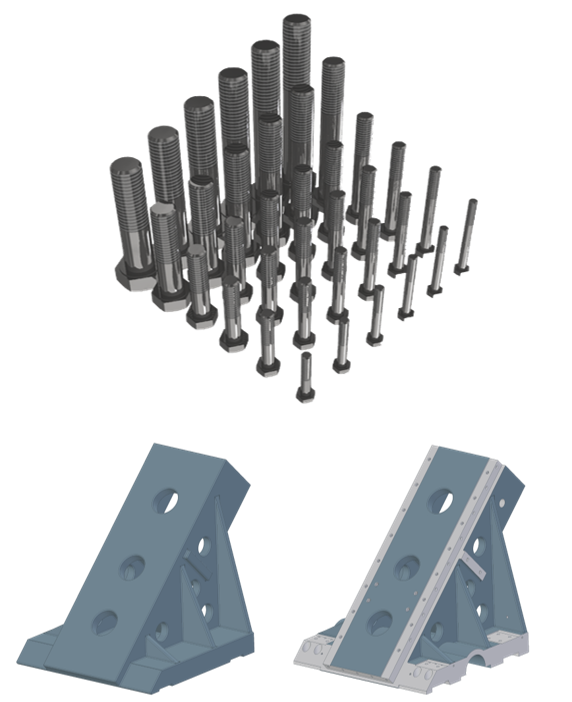
Model States - Parts and Assemblies
The new model states workflow enables users to create multiple presentations of a part or assembly within a single document, producing model state variations with different parameters, components, properties or simplification.
Model states are particularly useful for manufacturing processes, families of parts or sheet metal fold operations.
Model states can be used for the following:
- Machining operations from the casted model to the final part
- Sheet metal stages for multiple bend operations
- Weldments for weld preparation and other machining operations
- Product families that have different values for dimensions or features that are shown or suppressed
- Alternative assembly positions to quickly switch between them visually or used for drawing views
- Level of completion for each stage as your design gets assembled
- Simplification levels for removing intellectual property or high levels of detail before export
- iProperty information
Model states in assemblies can be used for configurations, weldment preparation or alternate positions.

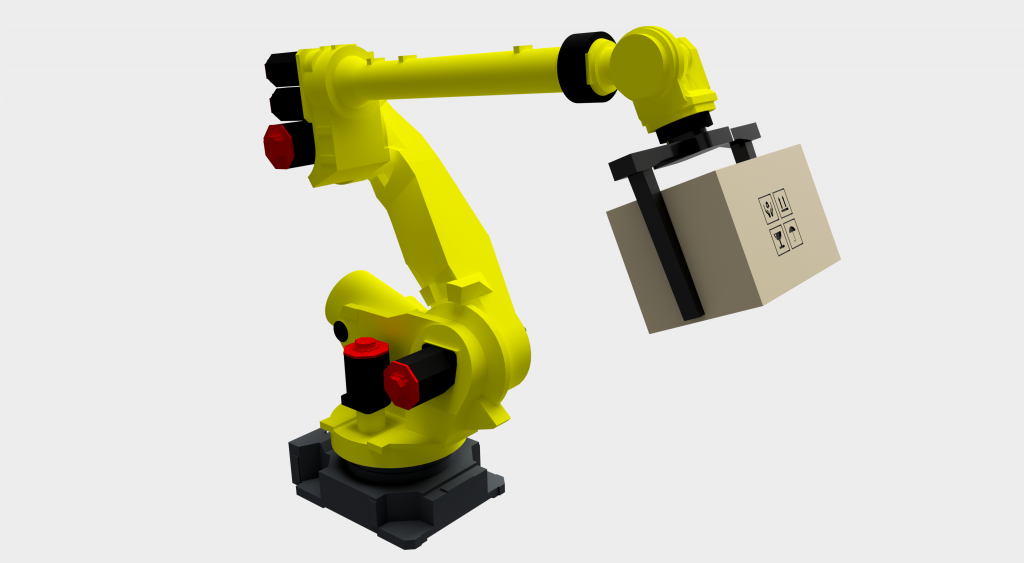
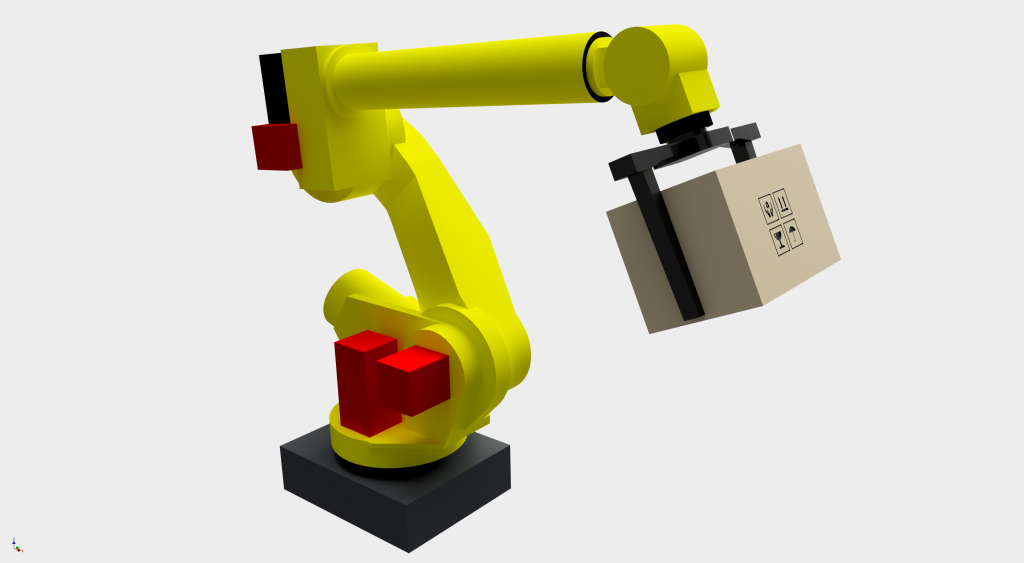

Assemblies - Instance Properties
Instance properties enables you to assign properties to individual component instances.
Assigned properties are stored in the parent assembly.
Unlike iProperties, Instance Properties don’t affect the referenced component files. Instance Properties are assigned to individual component instances only and can override custom iProperties.
Instance Properties are available in annotations such as balloons, leader notes and parts lists.
Interoperability - Inventor + Revit
2022 allow users for the first time to export Inventor models to the Revit rvt project file format.
The simplification tool gives users the ability to select only the components and features that are required for export into Revit.
A Revit Exports browser folder is placed in the Inventor model browser. It is populated with a node for the exported model. As long as the model is maintained in the specified path, you can edit, preview, open in Revit or an associated application, or update the RVT model.
Interoperability - Inventor + Fusion 360
In addition to Revit interoperability, the new Inventor 2022 release includes a ‘Send to Fusion’ button making it easier to send data to Fusion 360 and Fusion Team.
Upon selection of the Send to Fusion 360 command, files will automatically get uploaded to your Fusion Team account.
In Fusion, you can make edits to your model geometry without changing the part in Inventor, this ideal when you need to prepare a part for CNC machining, 3D printing, or generative design.
Productivity and Performance
The Autodesk Inventor team has continued to focus or Model, Drawing and Graphic Performance.
Parts, assemblies, drawings have all been enhanced year after year to deliver an efficient experience for everyone who works on complex parts and very large assemblies.
For those who enjoy editing parts while working in the assembly environment, you will find several performance improvements while editing sketches and visibility improvements. GPU’s are now better utilised for visual styles like displaying wireframe and silhouette edges and opening and closing documents is faster than ever.
Productivity - User Interface
Tube and Pipe
Angle attribute is now exported when saving one or multiple runs to ISOGEN .pcf files .
iLogic support for Model State
iLogic is expanded to support the following Model State workflows:
- ThisDoc.Document support for Model State In a component occurrence of a model state document, the existing ThisDoc.Document property returns the member document.
- The ThisDoc.Document property is expanded to support returning the member document when running in a component occurrence of a model state document.
- The new ThisDoc.FactoryDocument property returns the factory document when running either in a top-level document or in an assembly component. In a component occurrence document, this returns the associated factory document. In a top-level document, this returns the same object as ThisDoc.Document.
- In a drawing, the new ThisDrawing.ModelFactoryDocument property returns the factory document for the first model view (or nothing if there is no model view).
- In a drawing view, the new ICadDrawingView.ModelFactoryDocument property returns the factory document for that view (or nothing if it is not a model view).
- There is a new event called Model State Activated now available in the Event Triggers dialog box. This trigger occurs when a model state is activated. Use this trigger to run a rule in the document in which the event occurred.
- New function lets you add a component in a specified model state
A new function called AddWithModelState is now available on the Components object (IManagedComponents interface). This function adds a managed occurrence of a part or subassembly.
Note: Capture Current State on an existing component that includes a model state, in turn creates code that includes AddWithModelState. - iLogic edit-in-place and model states
There are some restrictions on what you can do with iLogic rules when you are editing a model state component in place. In a model state, when a component member file is being in-place edited within an assembly:
- You can edit, run, and suppress rules.
- You can’t add or delete rules.
There is no change to edit-in-place support for components that aren’t model state components: You can add an iLogic rule:
- From the top level document.
- At the sub-component level in the in-place-edit environment.
- Instructions to Modify an Occurrence Parameter with a Model State
Access the steps here: To Modify an Occurrence Parameter with a Model State.
- Use the new Instance property snippets to read and create Instance Properties.
- There is a new event named Any User Parameter Change in the Event Triggers dialog box. This event is triggered when you change the value of a User parameter.
Dark Theme
The Dark Theme that was introduced in the 2021 release has been fully implemented in 2022, including in the iLogic Rule Editor
Drawings
You can now change the look of shaded views in Drawings by changing the lighting style.
There are new drawing view options available to repurpose the camera views and 3D annotations created in the 3D model.Centerlines and center marks with extended lines now break when intersecting with dimensions, making it easier to read the dimension value.
Contact Us
If you would learn more about Autodesk software, please contact us by calling on 1800 490 514, by filling out the form or clicking the live chat in the bottom right-hand corner.






